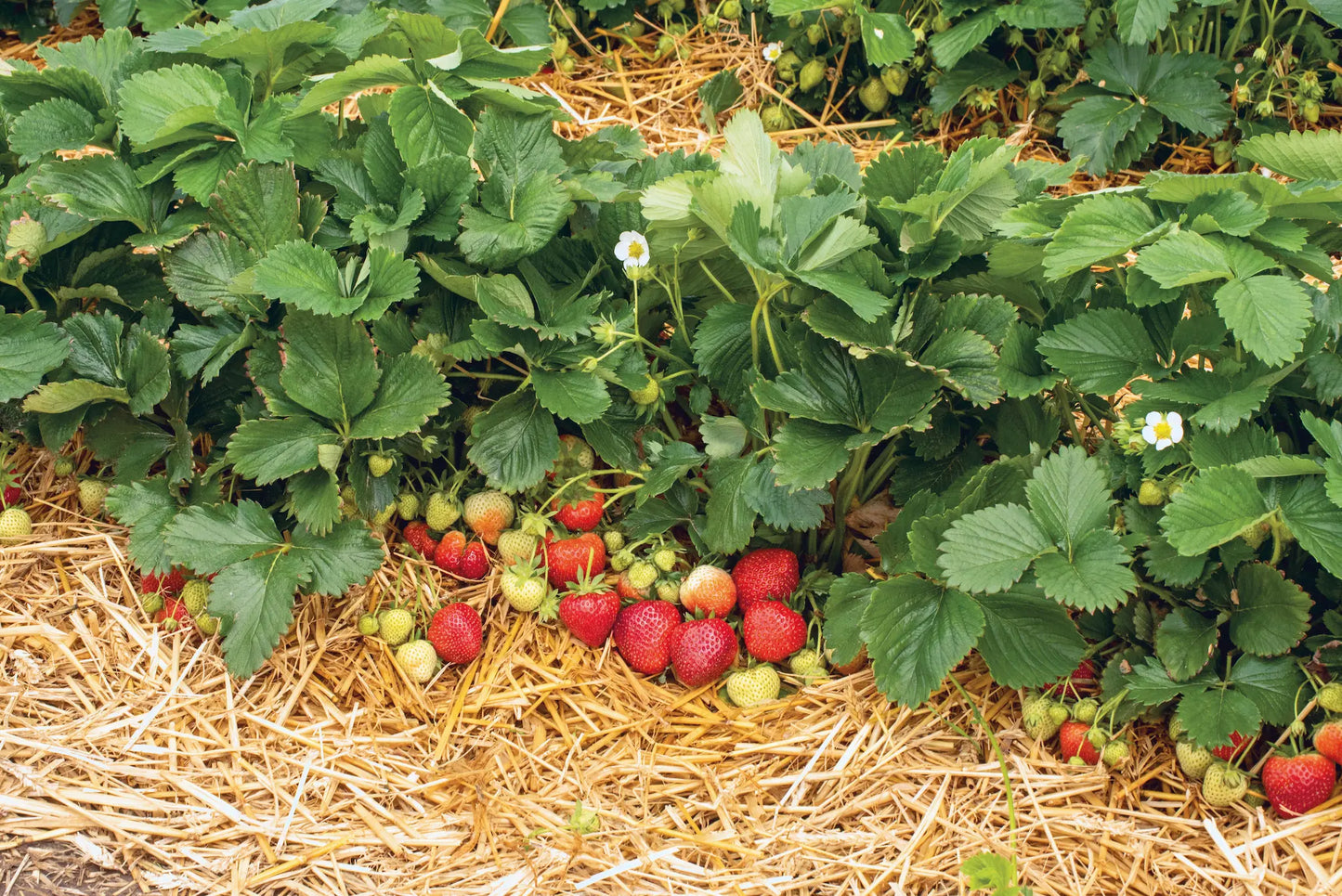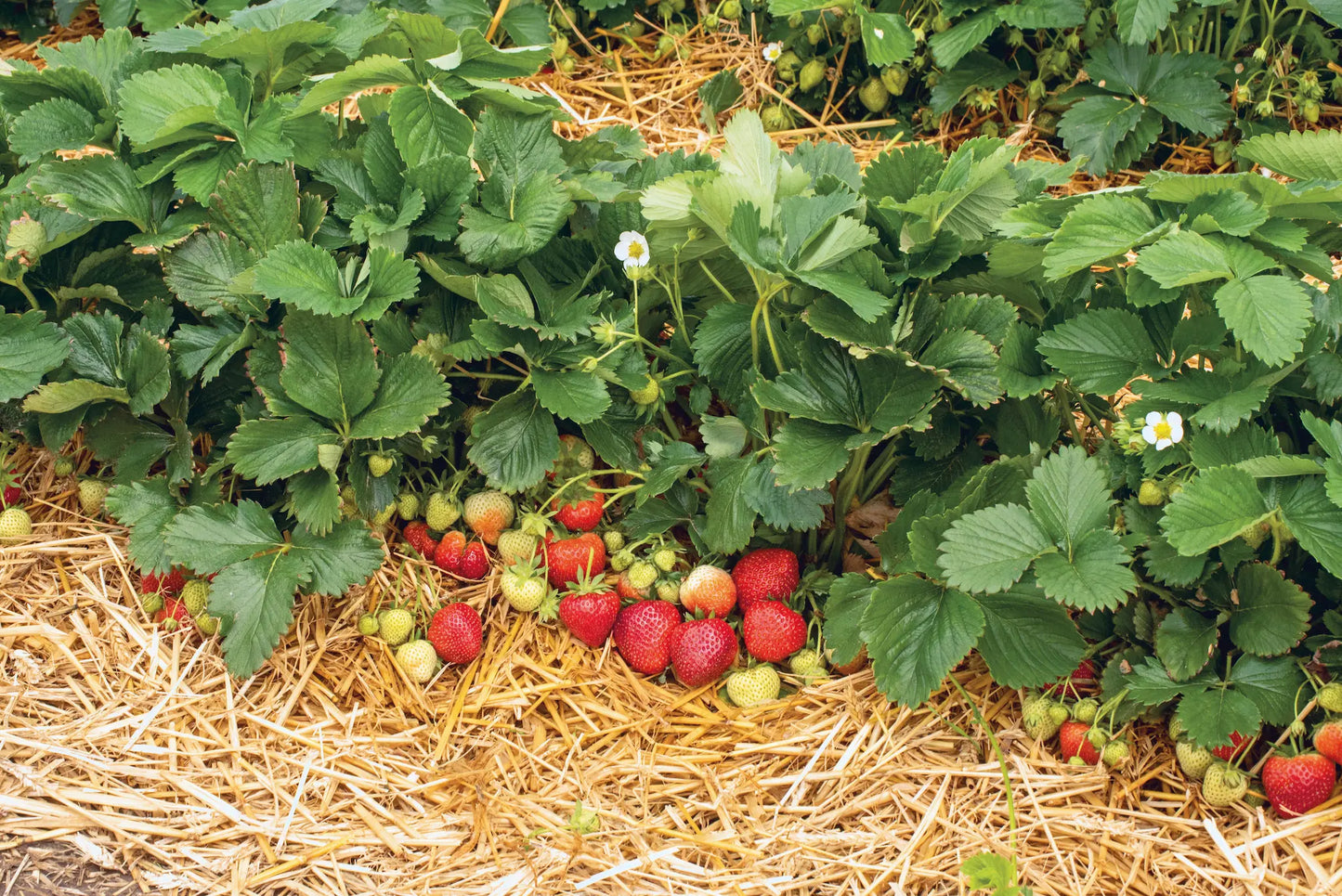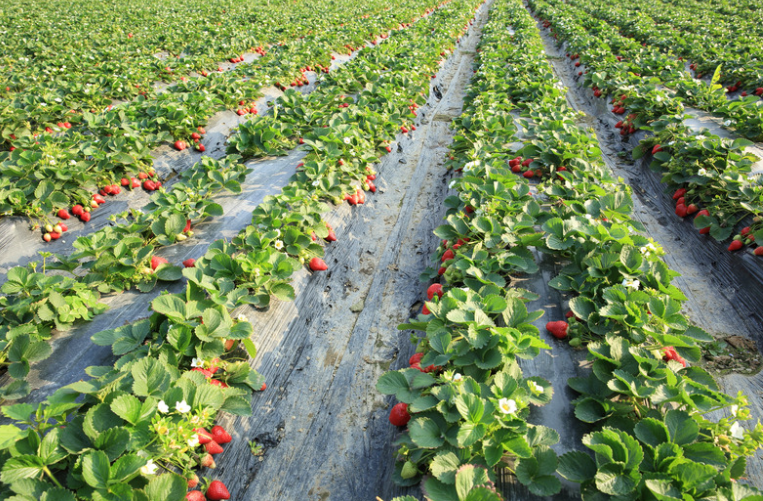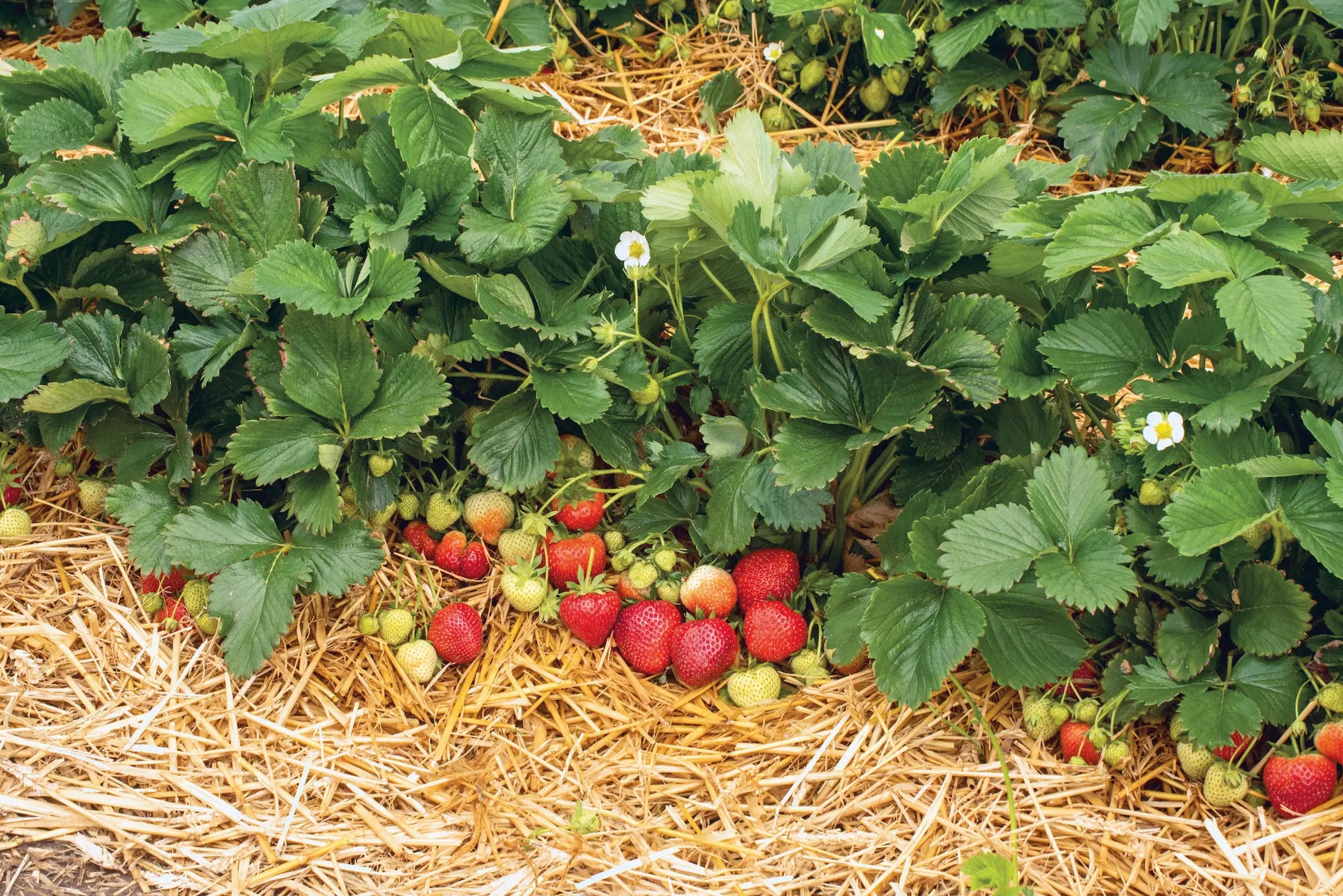-
Delivery from 10 plants to France, Switzerland and Europe
Delivery method -
Strawberry Plant Wholesale Supplier
About Us -
Quality Strawberry Plants
Strawberry technical itinerary -
Secure payment
Our Payment Terms
Favette Frigo A+ Strawberry Plant
Favette Frigo A+ Strawberry Plant
Price per unit (€ excluding VAT) excluding shipping. Our prices are based on volume. We offer you the best option based on your needs.
 - Add the desired date to your quote request
- Add the desired date to your quote request
- Buy now and get it delivered when you're ready to plant
- Delivery from 10 plants to France, Switzerland and Europe
Couldn't load pickup availability


Collapsible content

Strawberry Plant Buying Guide: What Type of Plants? For What Market Opportunity?
Which format should you choose: refrigerated, fresh, tray-plants, waiting bed, or plugs? Compare yields, costs, and harvest times at a glance.
Download the PDF guide (13 pages)
Why read this guide?
- Comparison tables: yield (300–600 g/plant), cost & labor.
- Reservation/delivery calendar for each format.
- Minimum order: 20 to 1,000 plants depending on the type.
- Full-field vs. above-ground case studies to maximize margin.
Overview of the 5 professional formats
Detailed comparison of formats
| Format | Yield (g/plant) |
Harvest time | Min. order | Average cost |
|---|---|---|---|---|
| Fridge | 250 – 400 | 120 days | 20 plants | 0.20 – 0.45 € |
| Costs | 280 – 420 | 140 days | 200 plants | 0.20 – 0.45 € |
| Tray plant | 400 – 600 | 90 days | 500 plants | 0.75 – 0.80 € |
| Waiting Bed | 300 – 500 | 105 days | 500 plants | 0.50 – 0.60 € |
| Motte | 230 – 350 | N+1 | 1,000 plants | 0.35 – 0.50 € |
Delivery schedule
| Plant type | Jan | Feb | Mar | Apr | May | Jul | Jul | Aug | Sep | Oct | Nov | Dec |
|---|---|---|---|---|---|---|---|---|---|---|---|---|
| Fridge | ||||||||||||
| Tray plants | ||||||||||||
| Waiting Bed | ||||||||||||
| Motte | ||||||||||||
| Costs |
Which format for which scenario?
Full field controlled budget
Fridge or Fresh : cost 2 x lower than tray plants, planting flexibility.
Above ground in greenhouse
Tray-plants : harvest 90 days after planting, uniform size, reduced labor.
Late planting
Mottes : planting July–August, rapid recovery, harvest the following year.
Ready to plan your plantings?
Download the complete guide Request a quoteFrequently Asked Questions
Is the guide free?
Yes, no fees or obligation to purchase.
How to download it?
Click the button “Download the guide” ; the PDF opens immediately.
Can I request a personalized quote?
Of course: write to us at contact@fraisiverse.com and an agronomist will respond to you within 24 hours.
Choosing the right strawberry varieties for your plot
Extend your harvest season by up to 5.5 months with our "early + season + everbearing" method. Compare 78 cultivars, sizes, and markets.
Download the PDF guide (17 pages)
4 axes to decide quickly
- Harvest Window : Early, Seasonal, or Everbearing? Combine them for 5.5 months .
- Commercial outlet : direct sales, long circuit, processing or freezing.
- Type of plants : fridge, fresh, root ball, tray plants… adapt your investments and your schedule.
- Growing conditions : open field, soilless, greenhouse; target consistent yield and size.
Axis 1: Select your harvest window
Example of recommended mix:
- Ciflorette (early) → Rubis des Jardins (season) → Charlotte (remontant).
- 5.5 months of continuous production, ideal for direct sales.
Axis 2: Sell at the right market
Direct sales
Ciflorette, Charlotte, Mara des Bois: premium taste sought after by consumers.
Long circuit / GMS
Magnum, Clery, Dream: uniform size, 95% class 1 fruit.
Transformation
Darselect, Mara des Bois – high sugar content and stable aroma.
Freezing
Honeoye, Belrubi – firm flesh, keeps well in the cold.
Axis 3: Choose the right type of plants
| Kind | Reservation | Delivery | Highlights |
|---|---|---|---|
| Fridge | All year round | Dec. → Aug. | Flexibility & price |
| Tray plants | Feb. → June | Nov. → Apr. | Above ground, harvest 90 days after planting |
| Motte | Sep. → May | Jul. → Sep. | Ideal for open fields, harvest N+1 |
| Costs | Feb. → Aug. | Sep. → Nov. | Young plants, rapid recovery |
Axis 4: Optimize your technical constraints
Tray plants guarantee +25% yield and simplified harvesting above ground; ideal for mechanizing your production and ensuring consistent size.
Frequently Asked Questions
Is the guide really free?
Yes, with no cost or obligation to purchase.
How to download it?
Just click the button “Download the guide” at the top of the page; the PDF opens immediately.
Can I request a personalized quote?
Of course: contact us via our contact page .
When to plant? When to harvest?
Do you want to start a strawberry farm but don't know when to reserve your plants, when to plant them or even harvest them?
Because we love 🍓 (with just a little sugar), we're going to do the work for you. On this page, you'll find the growing steps for each type of strawberry plant. When to order? What is the delivery period? When to plant? And finally, when to harvest?
Production Calendar - Frigo Strawberry Plants
| Production Calendar - Frigo Strawberry Plants | ||||||||||||||||||||||||
|---|---|---|---|---|---|---|---|---|---|---|---|---|---|---|---|---|---|---|---|---|---|---|---|---|
| Jan | Feb | Mar | Apr | May | Jun | Jul | Aug | Sep | Oct | Nov | Dec | |||||||||||||
| Reservation | ||||||||||||||||||||||||
| Deliverable | ||||||||||||||||||||||||
| Recommended planting | ||||||||||||||||||||||||
| Harvest | ||||||||||||||||||||||||
Production Calendar - Fresh Bare-Root Strawberry Plants
| Production Calendar - Bare Root Strawberry Plants | ||||||||||||||||||||||||
|---|---|---|---|---|---|---|---|---|---|---|---|---|---|---|---|---|---|---|---|---|---|---|---|---|
| Jan | Feb | Mar | Apr | May | Jun | Jul | Aug | Sep | Oct | Nov | Dec | |||||||||||||
| Reservation | ||||||||||||||||||||||||
| Deliverable | ||||||||||||||||||||||||
| Recommended planting | ||||||||||||||||||||||||
| Harvest | ||||||||||||||||||||||||
Production Calendar - Strawberry Plants Plugs
| Production Calendar - Strawberry Plants Motte | ||||||||||||||||||||||||
|---|---|---|---|---|---|---|---|---|---|---|---|---|---|---|---|---|---|---|---|---|---|---|---|---|
| Jan | Feb | Mar | Apr | May | Jun | Jul | Aug | Sep | Oct | Nov | Dec | |||||||||||||
| Reservation | ||||||||||||||||||||||||
| Deliverable | ||||||||||||||||||||||||
| Recommended planting | ||||||||||||||||||||||||
| Harvest | ||||||||||||||||||||||||
Production Calendar - Strawberry Plant Tray
| Production Calendar - Strawberry Plants Motte | ||||||||||||||||||||||||
|---|---|---|---|---|---|---|---|---|---|---|---|---|---|---|---|---|---|---|---|---|---|---|---|---|
| Jan | Feb | Mar | Apr | May | Jun | Jul | Aug | Sep | Oct | Nov | Dec | |||||||||||||
| Reservation | ||||||||||||||||||||||||
| Deliverable | ||||||||||||||||||||||||
| Recommended planting | ||||||||||||||||||||||||
| Harvest | ||||||||||||||||||||||||
Our Growing Guides by Plant Type / Our Growing Tips
Our online advisor: Fraisibot
Our technical itineraries by type of strawberry plant:
Technical Itinerary for Growing Strawberries from Frigo Plants
Technical Itinerary for Growing Strawberries from Plug/Pod Plants
Technical Instructions for Growing Strawberries from Tray or Mini Tray Plants
Technical Guide for Growing Strawberries from Bare-Root Fresh Strawberry Plants
Technical Instructions for Growing Strawberries from Waiting Bed Plants
All our growing tips for planting strawberries:
Strawberry Plants: Soil Preparation and Planting
Soil preparation for strawberry growing, planting techniques, and optimizing strawberry yield.
Best Practices for Irrigation and Fertilization of Strawberry Plants
Efficient irrigation systems, frequency and quantity of watering, types of fertilizers and application times, signs of nutritional deficiencies, growing strawberries in substrate, protection against frost and diseases.
Protection and Prevention of Strawberry Diseases and Pests
The main diseases and pests affecting strawberries, as well as effective methods for their prevention and treatment, including biological control and the use of resistant varieties. It provides practical advice for maintaining healthy and productive strawberry crops.
Succeeding in Strawberry Farming: Costs, Business Strategy and Subsidies
Growing strawberries requires significant initial and ongoing costs, but with effective marketing strategies and sustainable practices, growers can maximize their profits while contributing positively to the environment. Grants and financial aid are available to support necessary investments and encourage environmentally friendly farming practices.
Maximizing Strawberry Harvest and Storage: A Practical Guide
How to determine the optimal time to harvest strawberries, best practices for minimizing fruit damage during picking, and effective methods for storing and managing unsold strawberries to avoid losses and maximize profitability. It offers practical tips for extending the shelf life of strawberries, including refrigeration, freezing, and dehydration.
Strawberry Growing: Why Stagger Production? Early, Seasonal, Late? How to Choose?
Staggering strawberry production allows for harvests to be spread throughout the season, ensuring optimal fruit quality and increased profitability. Learn about recommended varieties for early, mid-season, and late-season production, as well as best practices for harvesting and storage.
Technical sheet for the Favette strawberry variety
- Remontant: Non-Remontant
- Precocity: Very early
- Harvest period: Early May to Early June. If exploitation in South France can begin at the end of April
- Shape, texture, appearance of the Fruit: Round and firm
- Fruit color: Very bright red currant red
- Taste characteristics: Good sugar-acid balance
- Fruit Size: Good sugar-acid balance
- Disease resistance: Hardy and vigorous
- Performance, management and marketing: Average performance
- Recommended commercial use / marketing channel: Direct sales, Wholesale, Processing
- Our advice: Issued from Surprise des Halles, similar but with larger fruit
Order your professional strawberry plants
Fraisiverse, a specialist wholesale supplier of strawberry plants , offers you the Favette variety, renowned for its precocity and premium quality. Buying your strawberry plants ensures an early start to the season, ideal for capturing profitable markets. Our plants, sourced from specialist nurseries , combine professional quality and producer prices . You benefit from dedicated technical support and personalized advice to optimize your yields. The Favette seduces with its large size, firm flesh and sweet taste, meeting the expectations of short circuits and direct sales. Thanks to our fast and careful delivery throughout France and our decreasing prices , you are investing effectively in your season. Order now , take advantage of our producer prices and reserve now to guarantee your volumes and anticipate your harvests.
Varietal characteristics and agronomic performance
The Favette strawberry plant stands out above all for its very early character , opening the harvest season from the beginning of May in most French production areas, or even from the end of April in the most southern regions. It is a non-remontant variety , which implies production concentrated over a single and intense period in spring.
Morphological and organoleptic characteristics of fruits
The fruits of the Favette are particularly remarkable for their imposing size , often described as large to very large, generally weighing more than 20 grams and can reach up to 25 grams each . Their visual appearance is most attractive: they have a bright, shiny red color and a fleshy, round, even slightly conical, but always very regular shape. The flesh, a homogeneous and deep red, is firm and juicy , while retaining excellent hold. In terms of taste, the Favette is unanimously recognized for its very sweet and fragrant taste , revealing marked aromas that make it a fruit of choice for tasting, positioning its sugar content (Brix) around 8 to 10° for premium seasonal strawberries. Its above-average firmness guarantees easy handling and good holding power at harvest.
Production performance and yields
The Favette strawberry plant, although not always classified as a very high-yielding variety in terms of pure volume compared to some industrial novelties, offers respectable productivity given its precocity and the exceptional quality of its fruits. In standard French conditions and with optimized cultivation management, we can expect an average yield per plant of between 400 and 500 grams .
Extrapolating to the hectare, based on common planting densities for professionals (for example, 40,000 to 50,000 plants/hectare), the average yield expected from Favette would be between 18 and 22 tonnes per hectare . It is important to emphasize that this yield, although moderate compared to the most productive varieties, is fully offset by the very high added value of Favette fruits on the quality fresh market.
Harvest calendar and production concentration
The harvest window for the Favette strawberry plant is particularly concentrated and early , which is a strategic asset for producers. Production generally begins between the beginning of May and the beginning of June in the majority of French areas. The notable characteristic of this non-remontant variety is that nearly 70% of its production is concentrated in a very short period , of the order of 2 to 3 main weeks. This concentration is typically between week 19 and week 23 of the year (i.e. from mid-May to mid-June) for most of the French territory. In the regions of southern France, the harvest can even begin as early as week 18 (end of April) . This grouped harvest greatly facilitates the organization of work, the planning of the workforce and the supply of commercial circuits at the beginning of the season.
Technical management and cultural itinerary
To fully exploit the potential of the Favette strawberry, a rigorous technical approach is essential. The precocity of this variety makes it a major asset for market gardeners looking to position themselves early on the market.
Planting and establishment
Planting Favette plants, whether in clods or in a fridge , is ideally done in autumn or spring for vigorous recovery and optimal production. Maintaining healthy, well-loosened and drained soil is crucial to promote good rooting and limit the risk of root diseases.
Nutritional and water requirements
Although the sources do not detail a specific fertilization plan for the Favette, large-fruited, high-yielding varieties like it require balanced fertilization of nitrogen, phosphorus and potassium , adapted to the different phases of the plant's development (from planting to fruiting). Regular and controlled irrigation is also essential, particularly during the flowering and fruit-enlarging periods, in order to maintain the size and taste quality.
In terms of maintenance, the hardiness of the Favette and the firmness of its flesh contribute to facilitating cultural management, potentially reducing sensitivity to certain physical damage and facilitating harvesting. The management of stolons , typical of non-remontant varieties, is an aspect to be monitored to concentrate the plant's energy on fruit production.
Economic evaluation and returns
Commercial quality and classification rate
In packaging, the Favette excels in its ability to produce a very high proportion of first category fruit (class I) : we regularly observe 75 to 85% of the fruit classified in category I. This high rate minimizes losses during sorting and maximizes the commercial value of the harvest. The percentage of waste is generally limited, fluctuating between 10 and 15% in optimal growing conditions, thanks to the firmness of the flesh and the hardiness of the plant. Uniformity of size is also a major asset, with more than 80% of the fruit reaching a uniform size greater than 25 mm at peak production, facilitating packaging in attractive trays.
Phytosanitary strategy and integrated protection
Natural resistance and hardiness
Regarding health management, sources describe Favette as a variety with good hardiness , which is an advantage for professionals aiming for sustainable cultivation and limited inputs. However, it is essential to emphasize that, despite this general robustness, the Favette strawberry, like any variety, requires increased vigilance and prophylactic management against major strawberry diseases and pests.
Pathology and pest protection programs
Available information does not provide precise figures or detailed scores on the resistance level of Favette to specific fungal diseases such as botrytis (grey mold), powdery mildew (Podosphaera aphanis), anthracnose, phytophthora (red crown), or verticillium wilt. In such cases, general prevention and integrated management practices are essential. This includes the choice of certified healthy plants, good crop aeration, optimal moisture management, and rigorous crop rotation to avoid the accumulation of pathogens in the soil.
Similarly, for common pests such as thrips, aphids, spider mites, weevils (Anthonomus rubi) and Drosophila suzukii, no data specific to Favette are documented in the sources provided. It is therefore recommended to adopt an integrated pest management (IPM) strategy for these pests, including regular monitoring of plots, the use of biological control (introduction of natural auxiliaries such as ladybugs or predatory mites), and the use of physical methods (insect nets, trapping) according to the observed pest thresholds. The firmness of the flesh of Favette may, however, make it slightly less susceptible to damage caused by Drosophila suzukii than varieties with softer flesh, but this does not constitute total resistance.
Commercial opportunities and development
Market destination and marketing channels
The profitability of the Favette strawberry plant for professionals is directly linked to its precocity and the premium quality of its fruits , which allow it to be used in often more profitable market niches. The Favette is mainly oriented towards fresh consumption , a destination where its organoleptic and visual qualities are fully recognized. It is perfectly suited to direct sales, local markets and short circuits , but also to wholesale, particularly for customers who are demanding on the quality of the fruit for consumption.
In addition to fresh consumption, the Favette is very well suited to processing, particularly for making jams . Its strong flavor and good stability make it an interesting choice for artisans and small food industries. Although its main destination is not freezing or mass agro-industry, its versatility allows it to explore these outlets if necessary. The conservation of Favette fruits is considered satisfactory , contributing to efficient supply logistics on short circuits and local markets.
Field feedback and professional recommendations
Feedback from growers in France positions Favette as a safe bet for the production of high-quality spring strawberries. Its precocity is an undeniable competitive advantage , allowing growers to capture the first market segments with a product with exceptional taste and impeccable commercial appearance. Its general robustness makes it a reliable choice for open-field cultivation , although special attention to health management is always recommended to maintain the variety's potential.
Professionals appreciate the Favette for its ability to generate attractive margins on the fresh produce market thanks to the value of its large, shiny, and very tasty fruits. It is often cited as an excellent option for diversification for market gardeners wishing to offer characterful strawberries from the start of the season.
To summarize: Our Favette strawberry plants
At Fraisiverse , we highlight our expertise as a specialist wholesale supplier of strawberry plants to offer growers the Favette variety, famous for its precocity and excellent taste profile. The Favette is distinguished by its large fruit, bright red color and superior firmness, guaranteeing consistent quality. Growers who choose to buy Favette strawberry plants invest in concentrated and strategic production, with harvesting possible as early as the end of April in the earliest areas. By choosing our service as a specialist wholesale supplier of strawberry plants , you benefit from technical monitoring, a reliable supply and plants from specialized nurseries, selected for their vigor and productivity. Choosing to buy Favette strawberry plants also means benefiting from a high proportion of category I fruits (75 to 85%), limiting losses and enhancing the harvest. We are your specialist wholesale supplier of strawberry plants to guarantee optimal results and an average yield of 18 to 22 tons/ha. Thanks to our logistics and commercial solutions, buying Favette strawberry plants becomes a strategic choice to position yourself advantageously on the quality fresh market.
-
Favette Frigo A Strawberry Plant
Regular price €0,18 EURRegular priceUnit price / per -
Favette Fresh Bare-Root Strawberry Plant
Regular price €0,18 EURRegular priceUnit price / per -
Favette Frigo A+ Strawberry Plant
Regular price €0,21 EURRegular priceUnit price / per -
Favette Frigo A Strawberry Plant - Buy Now Online for Professionals
Regular price €0,34 EURRegular priceUnit price / per -
Favette Fresh Bare-Root Strawberry Plant - Buy Now Online for Professionals
Regular price €0,34 EURRegular priceUnit price / per -
Favette Frigo A+ Strawberry Plant - Buy Now Online for Professionals
Regular price €0,39 EURRegular priceUnit price / per











